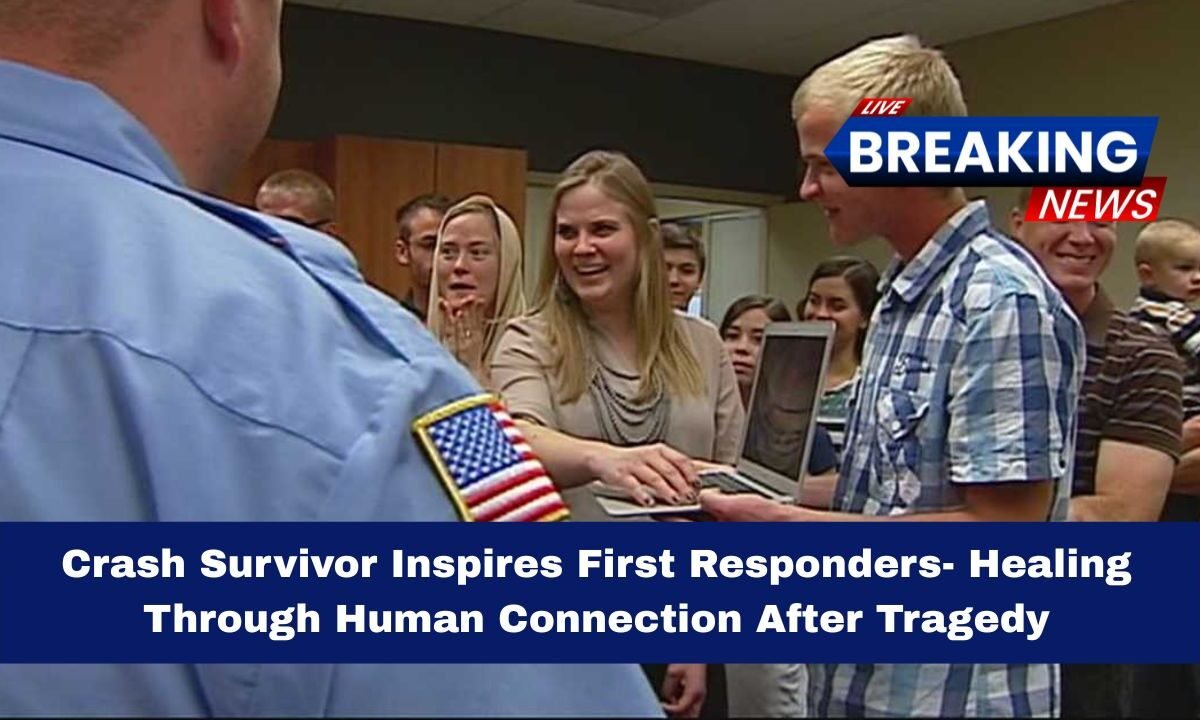In a powerful moment Tuesday, Alex Moffett, the sole survivor of a tragic car crash that claimed three generations of her family, stood before a room of first responders to deliver a heartfelt message about healing through connection.
Her story — of loss, survival, and resilience — has already captured national attention. Now, she wants those on the front lines of emergencies to see how small acts of human connection can shift the trajectory of trauma.
Moffett told the audience:
“I want it to be normalized to reach out to patients and make it okay to get in contact … because it could benefit the patient. It’s helped me immensely.”
In this article, we unpack her journey, the crash, her message, and tangible lessons for emergency personnel.
The Crash That Changed Everything
On June 10, 2024, Alex — along with her father, Derek; her 16-year-old sister, Catherine; and her grandmother, Patricia — were driving from Colorado to Kansas for a Chris Stapleton concert.
The family first picked up Patricia in Overland Park, Kansas, then took a day trip to Warrensburg, Missouri, the hometown of Alex’s grandmother.
Tragically, on the return trip, their vehicle was struck head-on by a teen driver who, authorities say, fell asleep at the wheel. The crash instantly killed Derek and Patricia. Alex and Catherine were airlifted to Research Medical Center in Kansas City via Life Flight.
Catherine later died in hospital after donating her organs to others in need, making Alex the lone survivor.
Her injuries were severe — facial trauma, multiple surgeries, a grueling recovery. In addition, she has received national attention: country star Chris Stapleton visited her in hospital, offering comfort in her darkest hour.
From Survivor to Messenger: The Symposium Moment
Months later, Moffett returned to Kansas City. At the Kansas City Fire Department Training Center, she addressed first responders participating in the EMS-Trauma 360 Critical Care Symposium. She stood shoulder to shoulder with paramedics, firefighters, EMTs, trauma nurses, and those who directly rescued her from the wreckage.
She described the surreal moment she learned of her family’s loss:
“It was kind of like I went to bed almost and then I woke up and this bad dream became reality.”
But beyond the shock and grief, she emphasized how connection — brief but human — can carry meaning for a patient in crisis, and reciprocally, for responders themselves.
Her plea: let it be okay to reach out, to touch hands, to speak a gentle word, to make contact — even when protocols feel rigid.
Why Connection Matters in Trauma
While medical interventions are critical, psychological and emotional connection can change how trauma is processed. For survivors like Alex, small moments of empathy — “You are not alone,” “I will do my best” — can anchor hope, trust, and human dignity.
For first responders, these gestures help bridge the emotional divide: a patient isn’t just an injury, and the emotional toll on responders is heavy. Connection helps both sides heal.
Key Facts & Timeline
| Event / Metric | Date / Value | Relevance |
|---|---|---|
| Crash date | June 10, 2024 | The day of the accident that killed three family members |
| Victims lost | 3 (father, sister, grandmother) | Highlights depth of tragedy and trauma |
| Survivor | Alex Moffett | She alone lived, becoming a voice for healing |
| Medical center | Research Medical Center | Where she and her sister were treated |
| Symposium | EMS-Trauma 360 Critical Care Symposium | Where she addressed first responders |
| Core message | Healing through connection | The theme she delivers to responders |
Lessons & Implications for First Responders
1. Normalize Simple Gestures
Responders are trained for protocols. But a gentle touch, eye contact, or short acknowledgment (“I’m here with you”) costs little — yet can be profound for someone in crisis.
2. Training Should Include Psychological First Aid
Beyond physical aid, responders can be taught emotional presence, active listening, and human connection skills.
3. Self-Care & Debriefing
Responders, too, carry emotional weight. Hearing Alex’s story reminds them to seek support, talk through trauma, and stay connected with peers.
4. Survivor Partnerships
Inclusion of survivors in training can humanize abstract protocols and deepen responder empathy — as Alex did with her appearance.
Alex Moffett’s story is heartbreaking — she survived when her loved ones did not. Yet in that survival, she has found purpose: teaching first responders that healing is more than medicine — it is human connection.
Her message at the EMS symposium was clear: let it be standard practice to reach out, to connect, to affirm a person in crisis.
For emergency responders, this is a call to recalibrate. The next time you respond to an accident or trauma, don’t just do your job — reach a hand, speak a word, hold presence. In those fragile minutes, connection can become part of survival too.




